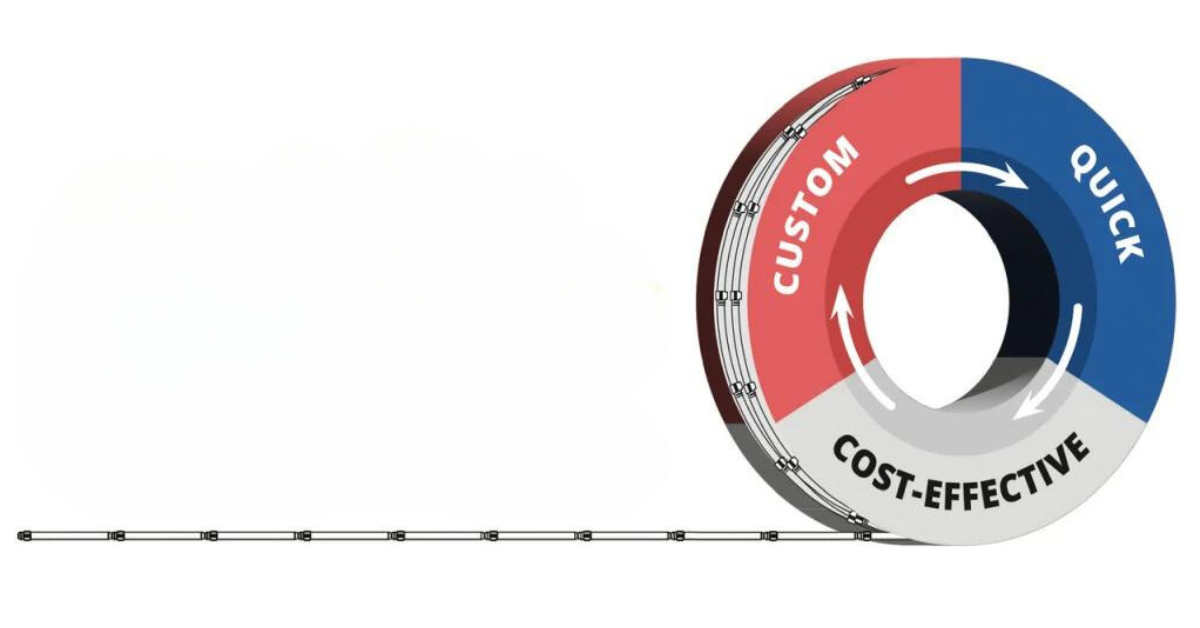What is Swaging?
Swaging is a cold-forming process that begins by pulling a continuous metal strip through a precision-engineered die to create a seamed tube. The tube is then reduced in diameter through a series of progressive forming cavities before being cut into individual components. This high-speed process involves shaping the metal rather than removing it, making it highly efficient. It’s ideal for producing small, tubular metal parts with consistent dimensions at a low cost. Swaging can also be used with round or square wire, as well as loose or continuous wire pins.Key Benefits of Swaging:
- Cost-effective and fast production
- Highly scalable and repeatable
- Uses minimal material, reducing waste

What is Machining?
Machining involves feeding metal rods into a turning press to produce individual interconnect pins and contacts. While this method allows for precise control over the final shape, it often results in significant material waste, which increases overall costs. Machining is typically slower and more expensive, especially for large-scale production.Key Benefits of Machining:
- Versatile for a wide range of designs
- Capable of achieving tight tolerances
- Excellent for complex and custom shapes
Swaging vs. Machining: A Comparison
When choosing between swaging and machining, several factors should be considered:Cost Efficiency: Swaging is generally more cost-effective, especially for large volume runs, due to its speed and low material waste. Machining tends to be more expensive because of the higher amount of scrap generated.
Material Usage: Swaging minimizes material waste by compressing and forming the metal, whereas machining often involves cutting away excess material. Swaging can reduce material costs by up to 80% depending on the type of metal used.
Precision and Tolerances: Both methods can achieve high levels of precision, but swaging is particularly effective for specific pin geometries. Machining, on the other hand, is better suited for intricate and tight-tolerance parts that may require multiple steps.
Durability and Strength: Swaged pins often benefit from enhanced strength due to the cold-working process. Machined pins, however, rely more on the inherent properties of the base material.
When to Use Swaging
- Reducing rods, wires, and tubes
- Modifying existing products
- Sizing and shaping new components
- When lighter components are required
- For high-volume production
- In situations with tight deadlines or budgets
- For PCB applications
When to Use Machining
- Creating complex geometries
- Producing custom parts with tight tolerances
- During the prototyping phase
- When heavier components are needed
Why Bead Uses Swaging
Bead Electronics has been using swaging to manufacture custom pins since 1920. This time-tested technique has evolved into an innovative and efficient process that delivers high-quality, high-precision pins at a fraction of the cost of machined alternatives. For example, our hollow pins can weigh up to 63% less than solid machined pins while maintaining identical mechanical and electrical performance. Our swaging process has been refined over more than 100 years, ensuring reliability and consistency in every product. Whether you need a simple pin or a complex component, swaging offers a smart, cost-effective solution that meets the demands of modern electronics manufacturing. Learn more about how we’ve been using this method for over a century!1-5L Rectangle Tin Can Production Lines
Tin Can Seamer Machine,Rectangular Tin Can Machine,Oil Tin Making Machine Price,Rectangle Tin Can Production Lines
Zhoushan Golden Wing Machinery Co., Ltd. , https://www.goldenwingmachines.com